Gladiolus is undoubtedly one of the most beautiful and unusual flowers that can be found almost on any city club and in any garden. In the people, it is also called a dress, but the essence does not change from this - with proper care, these plants are able to transform any plot into a beautiful garden worthy of Roman emperors. In this article you will learn everything about the cultivation of gladiols.
Morphological features of gladiolus
Gladiolus belongs to the genus of tuberukovic plants of perennials. This is a beautiful and noble culture that is used not only in landscape design. So, the gladiolus is one of the most sought-after "congratulatory" flowers along with roses and cloves.
All gladiolus similar morphological characteristics: Long stems from 40 to 80 cm, narrow oblong leaves of gray-green color. Because of its unusual shape and sulfur-colored foliage, resembling a metal gleam, plants earned their name and legend. It is said that when two gladiator friends in ancient Rome refused to kill each other in the arena and threw weapons. They were executed, and swords who fell to the ground immediately sprouted wonderful flowers. The reprehensive stalk turns long leaves, and at the top is formed by the cooled inflorescence of the flowers of the funnel shape. After flowering, seed boxes appear instead. One inflorescence can consist of 20 buds, but immediately dissolve not more than 12.
The lower part of the flower is no less interesting - it is represented by the tuberukovka, which every spring is independently updated and gives rise to a new stem with flowers. At the initial stages of the plant development, last year's bulb gives vital substances, and in the process of the growth of a new stem and inflorescences, new layers appear in the underground part. Above the old bulb is formed new with an abundance of children around. These kids are the main planting material used for the reproduction of gladiolus, since the seed method does not allow preserving varietal characteristics.
In total, about 250 types of gladiols, which have more than 2,000 varieties are known. Gardeners are mainly used hybrid varieties, since they are very lush and diverse.
Classification of gladiolus
Since the number of gladiolus varieties is truly huge, and each of them is distinguished by the shape, coloring and period of blossom, choose the planting material is very difficult. To simplify this task, a classification was developed. Each variety is assigned its own unique number of several digits. The first figure indicates the dimensions of the flower: 1 - less than 6.5 cm (mini), 2 - from 6.5 to 9 cm (fine-color), 3 - from 9 to 11.5 cm (mednical), 4 - from 11.5 to 14 cm (large-flowered) and 5 - from 14 cm and above (giant).
The next pair of numbers says about the color of the petals: white marked with numbers 00-01, green - from 02 to 04, yellow - from 10 to 16 and so on to brown and smoky shades marked with numbers from 90 to 98. At the same time, the second digit is paired Indicates the intensity of the tone, and if it is odd, it means on the petals there is a cut, stains, strips or other interesting inhomogeneities.
Also in every variety room there are letter characters that talk about flowering timing:
- OR - very early;
- R - early;
- CP - medium;
- C - average;
- Joint venture;
- P - Late.
If about 70 days go from the moment of planting to blooming, then the variety is very early, if up to 120 days - late.
The form of petals in the gladiolus can also be different: corrugated, dissected, simple, folded, terry and even dragon.
The next pair of symbols means the year of grade release (revenue for sale). Next is the fraction, and after it indicates the number of buds and the number of simultaneously drop-down buds on the flower. Finally usually write the author, which brought the variety.
Also distinguish between two ocotype gladiolus in the area of \u200b\u200borigin: American and European. The first is distinguished by folded or corrugated petals, and the flowers themselves are large or medium sized with the right location in inflorescence. Usually all of them on one stem 20-22 pieces, but at the same time dissolve to 10 buds. The European Ecotype includes varieties with smooth or slightly wavy petals of flowers with 15-17 buds in inflorescences, of which simultaneously dissolve to 6 pieces.
Separately, it is worth talking about fragrant gladiolus, called the accidant. This flower, externally, very resembling a typical gladiolus, but presented only in bright shades: cream or gentle pink. Mostly, the asidant is grown in greenhouses. Another kind of fragrant gladiolus is a montstour or Japanese gladiolus. This plant also belongs to the family of iris and its flowers look like a miniature gladiolus flowers with the only difference that they are not shot down into a dense spikelet on the stem, but are located separately. Very often, the montstour can be found in the classic Japanese Iquiban.
Gladiolus cultivation
Since the gladiolus decorate many urban and yard flowerbeds, you might think that they are completely unpretentious and do not require almost no care - they grow independently, and okay. However, in fact, everything is not so simple, and if you want to get the maximum result, you should stick to a number of requirements for cultivation and care. These plants love light, heat, nutritious and oxygen-saturated soil.
Soil preparation for landing
One of the most important requirements is the right selection of the area and the preparation of the soil on it. Gladiolus loves well lit and closed places from through winds, the soil should be well to skip moisture and can not be poured. The farther to the north there is a landing site, the lighter it must be, because even due to a small shading, the development and bloom of gladiolus will be braked. Do not land colors in places where groundwater is close to the surface. The playground should be with a barely noticeable bias (desirable, south) so that the excessive water is unhindered and did not delay.
Soil acidity also plays a big role. Ideal for gladioles suitable a weakness soil with a pH level of 6.5-6.8. If it is higher, then the tips of the leaves will be constantly sluggish and dark, and the buds are badly disclosed, fusariosis may appear. To reduce acidity, use chalk, lime or dolomite flour. The use of the latter is written in detail in the article " Dolomite Flour: Application, Features" If the acidity is too low, the plants will not be able to absorb iron from the soil, and it affects the production of chlorophyll. As a result, yellow and quickly fading leaves.
The optimal value of the soil will be sproughs or light loam. If the site stands on a heavy loam, add some river sand into it, if on the sand, make a little clay, compost and humus. If the garden is located on a sunny and well warmed place, leaving it before the planting of the bulbs, but not before, otherwise the soil will dry off. In order to prevent the too quick evaporation of moisture, make the main steps along the autumn, then before planting the bulbs it will only be enough to break the earth.
Useful advice: Gladiolus people feel well on former vegetable beds, where legumes or grass-perennials grew. But on the site of ASTR or root, they are better not to plant them, because these plants have already taken nutrients desired for gladioles.
It is most convenient to note where the gladiolus will grow, in the fall, to immediately make phosphoric and potash fertilizers in the soil. They need time to dissolve, because chlorine can harm the bulbs in the spring. But unlock fertilizers can be made early in spring.
The landing of gladiolus should be held at the end of April, when serious frosts passed, and to end this work until mid-May. The major bulbs are plugged into the ground by 10-15 cm, withstanding the distance between plants in 15 cm, and small - no more than 10 cm, planting at 7-8 cm from each other. Between the rows, it is enough to leave about 25 cm. The landing grooves are spangling with a solution of phytoosporin and squeeze the bottom with a moss-sphagnum to prevent soil drainage. You can also pour a layer of river sand, but Moss also prevents the appearance of rot.
Useful advice: Never sit down the gladioluses in the same place for two years in a row, otherwise they will inevitably hurt and degenerate. In addition, it is better not to choose to land on the bulbs of the place where any plants have grown, subject to the same diseases as gladiolus (asters, phlox). Squeeze them on former cucumber, onion, garlic and strawberry beds.
Planting material
An extremely important point is the correct preparation of gladiolus to landing. Approximately a month before the landing, it is necessary to gently remove the husks from the bulbs - a dense casing. Try not to damage the sprout, rebel partially damaged and rotten bulbs. You can leave except for a little lubricated as a pair or sclerotinia, but the place of damage needs to be cut and handled with green.
After processing, lay out all the selected bulbs of gladiolus sprouts up onto a flat surface and place in a warm and bright room until shoots germination. Immediately before planting a pot or open ground, treat all the bulbs to the disinfecting agent of 0.3% of potassium permanganate solution (immerse in a solution of 2 h) and 0.3% of the Fundazola solution (immerse 1 h). Alternatively, you can use a solution of manganese (0.5 ml per 1 liter of water), immersing the bulbs for 30 minutes.
Gladiolus kids should be prepared for a couple of weeks before landing. Choose a 7-8 mm kidney in diameter, but if the variety itself is small, then the kidneys can be taken in bed. They must be with distinguishable root tubercles. Remove the hard shell from them and decompose on the tray, then place under the scattered light to germination. To radiate the children, before germinating the gladiolus, lower them into a solution of manganese (1 g per 1 liter of water) for 9 hours.
In the video, it is described below when to plant gladioluses and how to properly prepare the planting material:
Planting gladiolus
To gladioluses please you with lush bloom, you need to choose the place and correctly put on the bulbs. Best if the flower bed will "look" from the east to the west. When planting gladiolus, decide, based on the climatic features of your area. For example, for the middle strip of Russia, the landing time comes in the first days of May, since at this time there are no serious night frosts, and the temperature of the Earth is about 10s. The intensive growth of the root system is possible only with relatively low temperature and sufficient moisture.
The depth of planting of bulbs depends not only on their size, but also on the characteristics of the soil. So, if there is a light soil on the plot, plant gladiolus to a depth of 10-12 cm, if loam, cut the distance by 2-3 cm. Children should be completely gluable only by 3-5 cm and plant 7-10 days earlier than full-sized bulbs. If placing the planting material deeper, the plants will bloom much later, the clubnellukovitsa will be too big, and the number of buds will noticeably decrease. After planting gladiols in the ground, sat down a garden 2-3 cm. Houring.
Gladiolus care
How to plant gladiolus are more clear, but it is only half of the success. This is a male plant, and as every man gladiolus loves attention and care, and the path to His heart lies in all the famous route - through the stomach. If from the very beginning, do not forget to feed the flower, it will manifest itself in all its glory and will reward you with lush and bright flowering. Make fertilizers from the 10th day of June, when 3-4 sheets appear on the stem, spend the second session after 10 days, when 5-6 sheets appear, the third - again after 10 days or before flowering. Best of all, liquid fertilizers are suitable for gladiolus, because they are quickly absorbed. Stop feeding around in mid-August so that the plant could "calm down" and prepare for the winter.
Gladiolusus extremely painfully react to insufficient moisture content of the soil, so it is necessary to water them abundantly and regularly. Otherwise, the root system will be underdeveloped, and inflorescences can turn out to be chilly and curves. About high-quality landing material for the next year under such conditions and it is not worth talking.
Diseases and pests of gladiolus
As for the diseases of the gladiolus, in this case you need to try to prevent their appearance by all forces, since treatment is not easy. Prevention of diseases primarily lies in the right agrotechnical manipulations and compliance with the basics of plant protection. Most of the diseases apply with mushroom dispute. If the landings are too thick, and the weather conditions were unfavorable, the disease can destroy the entire flower in just a week.
Mineral feeding can also serve as a dissemination of the disease. If fertilizers too much or they are strongly concentrated, the root hairs of the bulbs may damage. Through the removable fabric inside the plants can easily penetrate all sorts of diseases. During the period of flowering, do not overflow flowers with nitrogen-containing fertilizers, so as not to increase the interclaturers of the root tissue, through which bacteria and mushrooms can also penetrate. If nitrogen in the soil is in excess, the plants will be difficult to "calm down", and due to the continuation of growth, the quality of the bulbs will decrease.
The potassium, on the contrary, strengthens the immunity of gladiolus and increases the resistance to adverse weather conditions. Also, zinc, manganese and copper useful for plants. Nitrogen prevents the absorption of copper, and phosphorus - zinc, for this reason, in a complex with nitrogenous and phosphorous fertilizers, it is always necessary to give copper and zinc (phosphoric is generally better not to get involved and make them only in autumn).
Useful advice: so that the rain and wind do not damage the beautiful flowering of gladiolus, plant them between dense mid-grayscale plants with spreader branches, such as barberries or small spirits. Then their branches will be able to keep the stalks of gladiolus in a vertical position. Another option is to bind the stalks to the pegs, and around to plant perennials to disguise all the technical nuances. Also, there can also be a tone of gladiolus in the tone between the rows - it will be very beautiful and saturated.
Cleaning for the winter and storage of gladiols
Since gladiolus extremely undesirable to grow two seasons in a row in the same place, they need to dig them for the winter. It is necessary to do this at about the beginning of the middle of October a month after the end of flowering. Choose dry weather, takes out early early, and then late varieties. Last but you should dig small bulbs and children.
Before that, you can cut the stems or remove them after - as you are more convenient. The roots should also be trimmed, after which it is gently shook the extra soil and separate the children. Place the bulbs in the drawers with a perforated bottom, separating the varieties from each other, so as not to confuse gladiolus in the spring. Rinse the bulbs in water and lower the Fundazola solution for 30 minutes, then rinse again and process with 3% warranny solution. Such a procedure will defrastize the planting material, and it will continue without any problems until next year. After processing, lay the bulbs in one layer and leave for 3-4 days to dry in a ventilated room. Now you can decompose them on the boxes, shifting the rows of paper (the newspapers are suitable). Store gladiolus in the house at a temperature of 25-27c, turning the bulbs every few days. After a couple of weeks, it is reducing the temperature in the room to 18-20s, and in a month and a half, proceed to cleaning and sorting.
Remove the topmost layer from the bulbs and separate the children, sorting to them in diameter: 8 mm and more (large) and 6 mm. Place your children in paper ulons and store at temperatures + 5-6c, but not higher, otherwise they may not take it in the spring. For storage perfectly fit the lower shelves of the refrigerator.
The natural period of "hibernation" of gladiolus lasts 35-40 days. At this time, the bulb will not be able to proceed even in the best conditions - any plant needs to relax and gain strength. However, after this period, the risk of germination is great. To gladiolus suddenly woke up in the middle of winter, keep the bulbs at a temperature not higher than + 10c and a humidity of 60-70%.
Useful advice: For greater safety, put in each box for several cleaned garlic teeth, replacing them once a month fresh. Simultaneously with the change of garlic, browse the bulbs and throw off the spoiled.
Gladiolus need to "breathe", but in the refrigerator they need to be stored in a sealed plastic container, shifting the paper - so they will not be powered. Somewhere in the mid-end of February they need to get it, as you should dry, shifts the new paper and remove the cold again. If this is not done, gladiolus can bend.
For storage outside the refrigerator, spread the bulbs in 1 layer so that they do not come into contact. For wintering, they will strongly "lose weight", but if before landing it is properly prepared and for a long time to soak in the growth stimulator, the bloom will not be worse than the gladiolus seedlings.

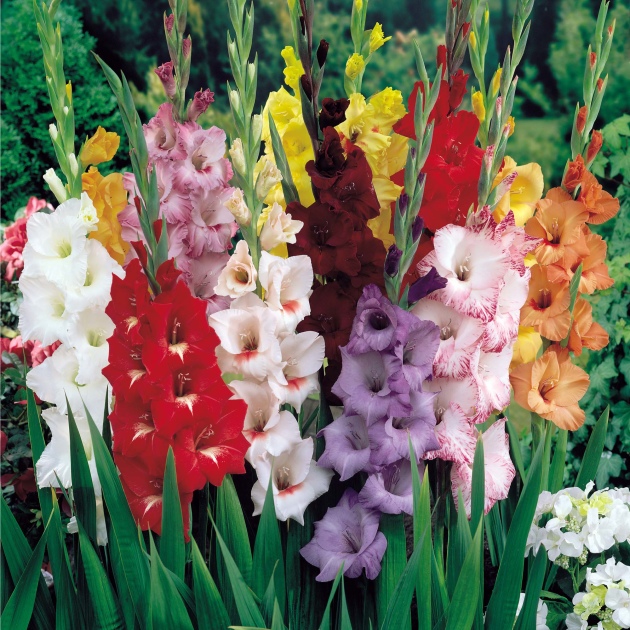
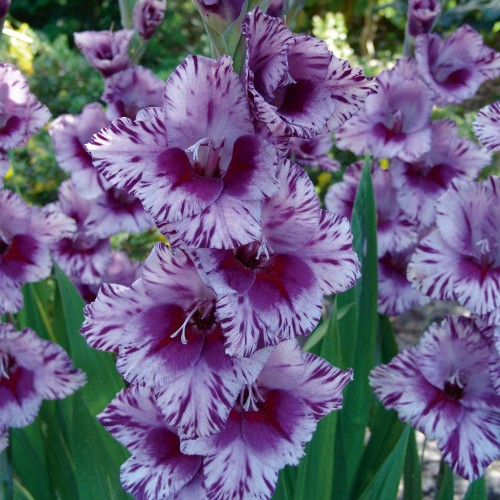
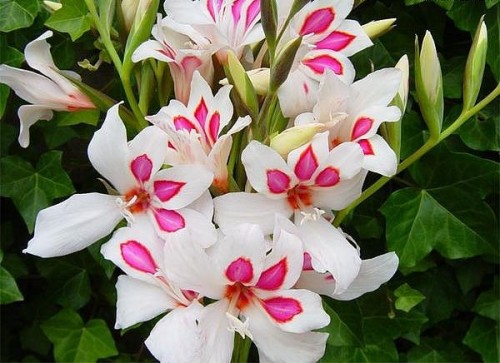
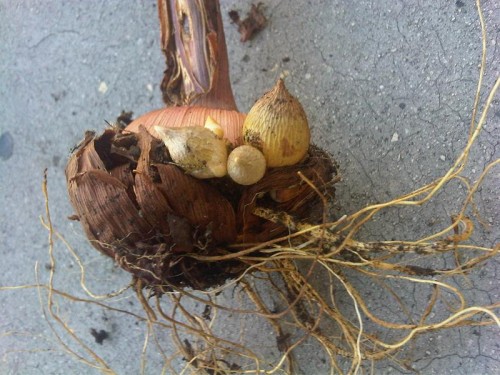
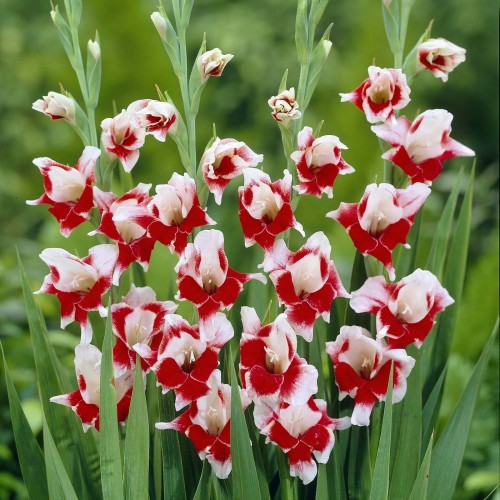
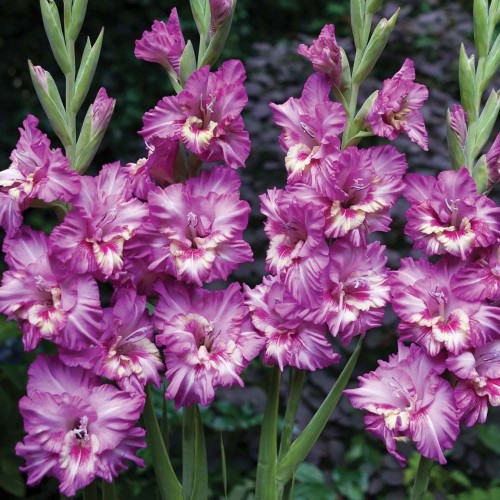
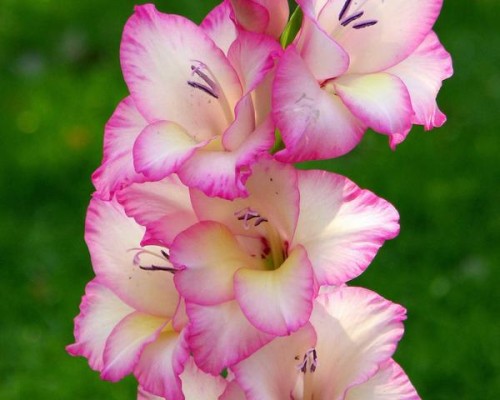
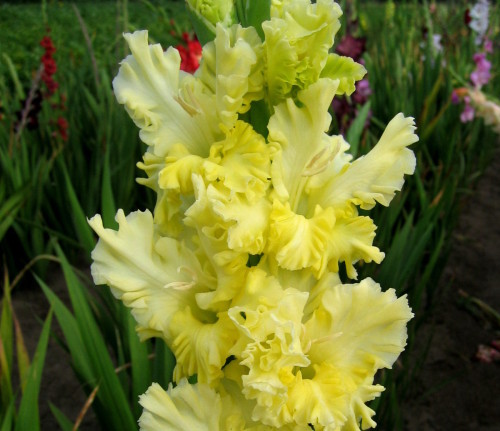
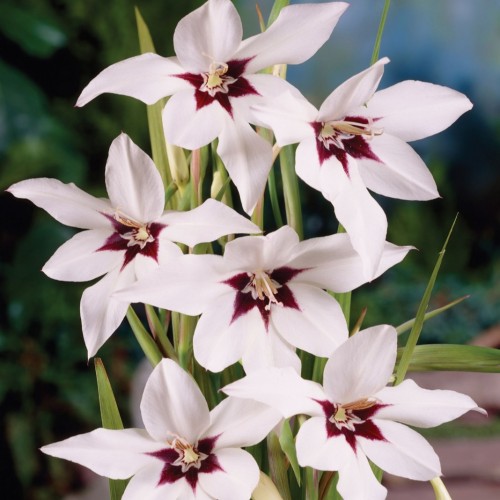
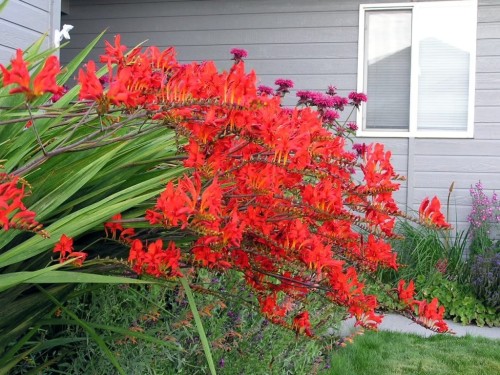
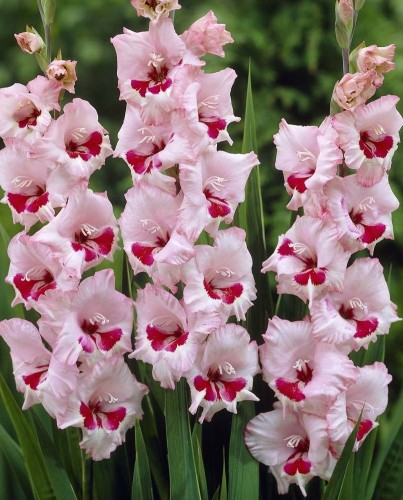
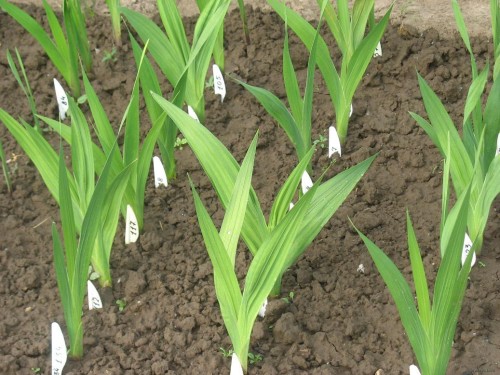
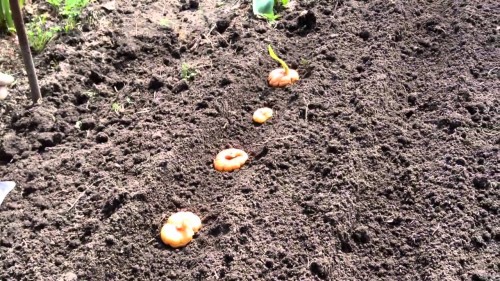
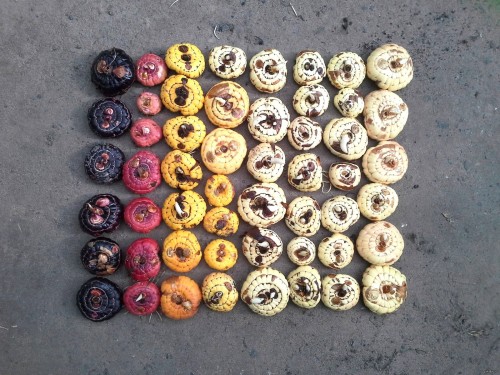
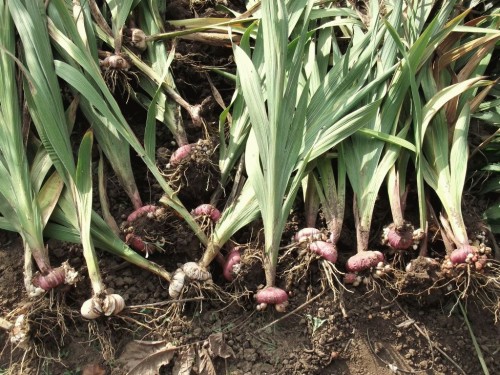
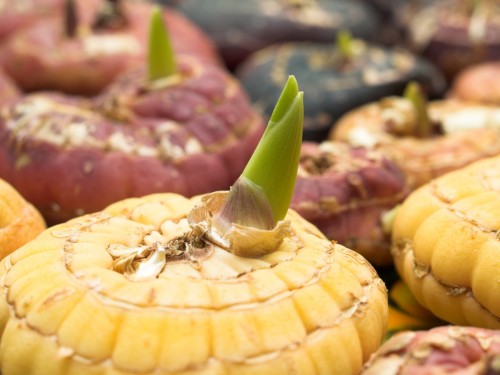
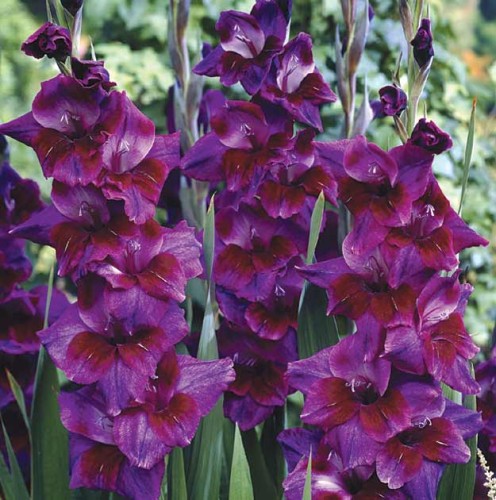
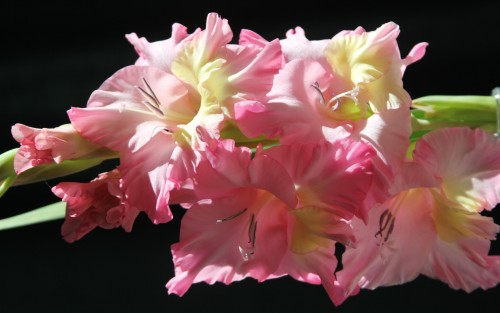
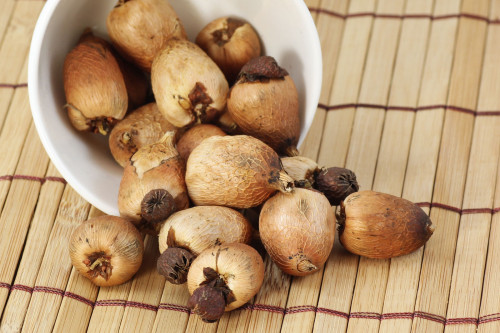
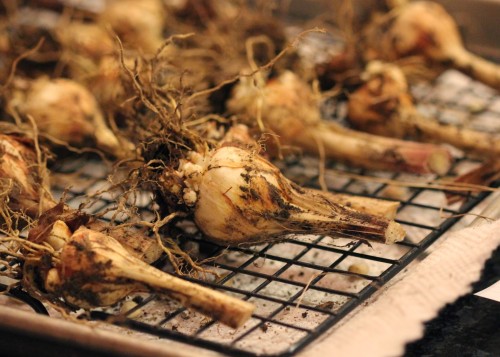
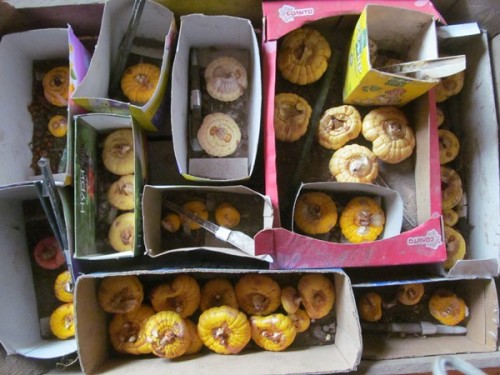

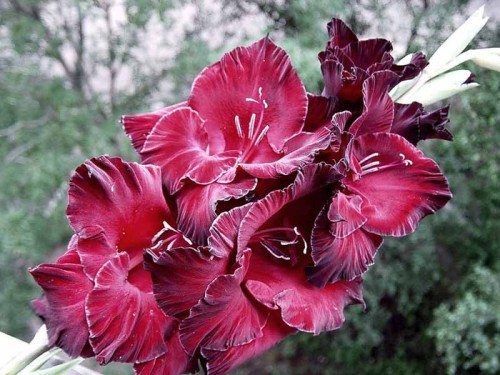
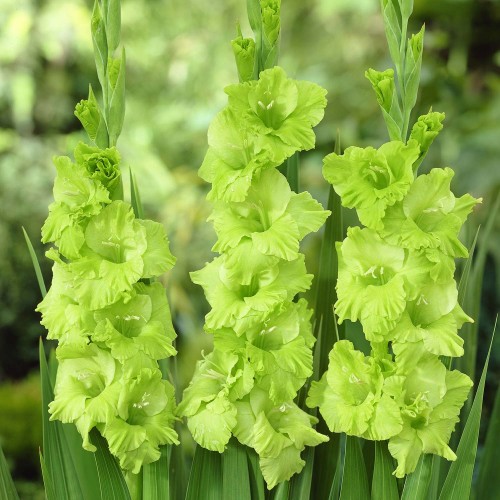
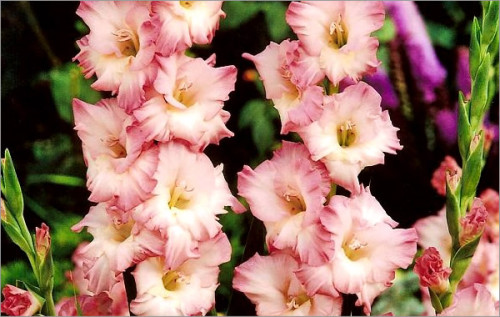
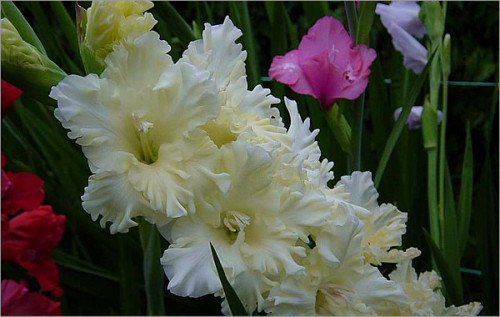
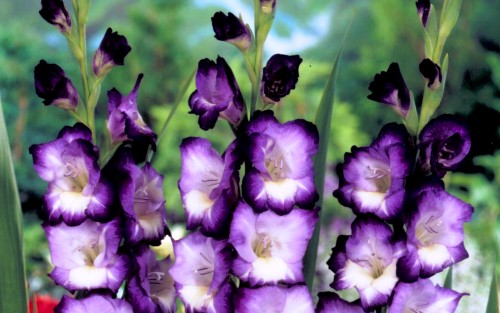












 Start a discussion ...
Start a discussion ...